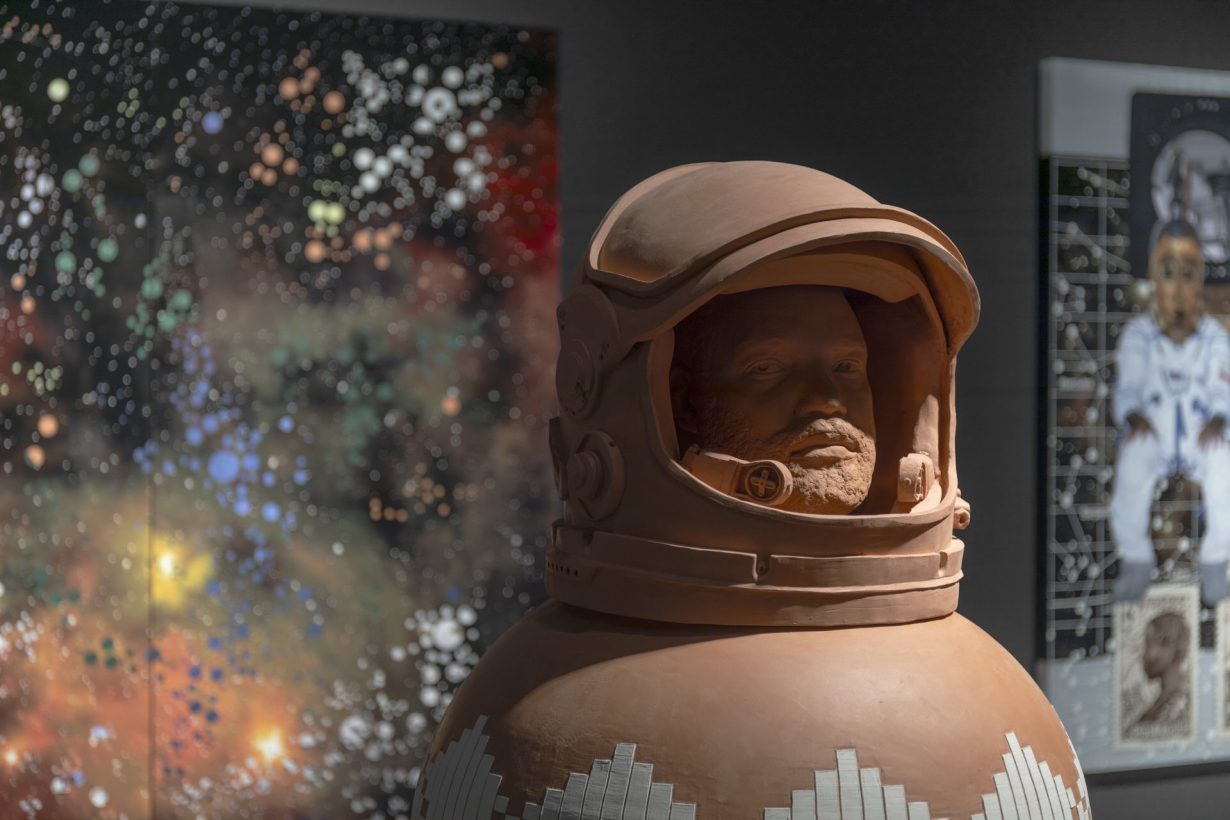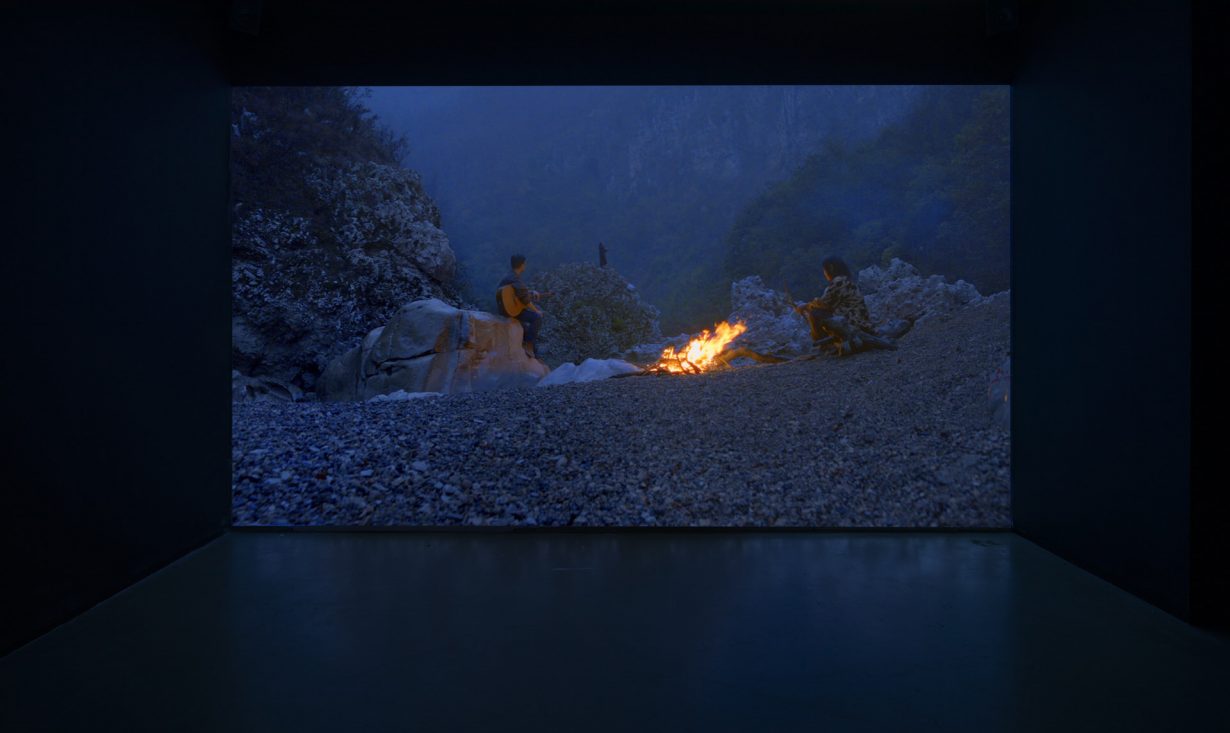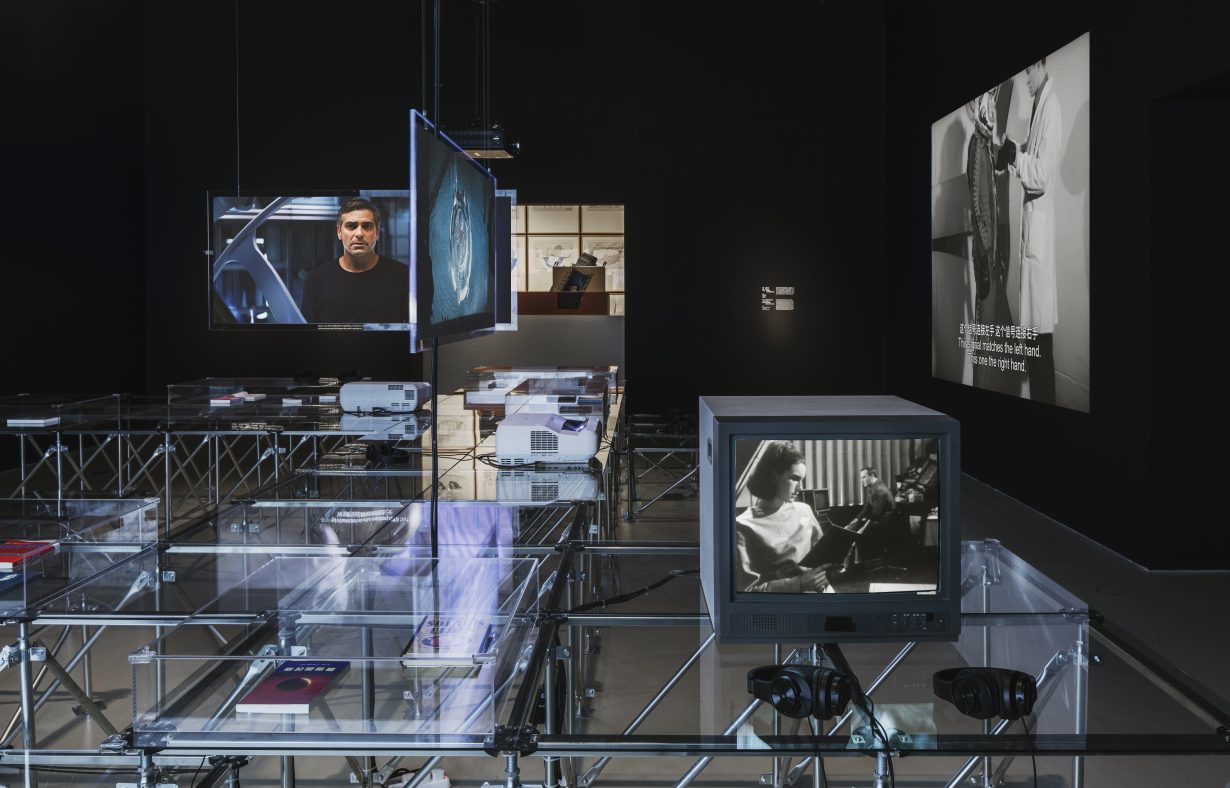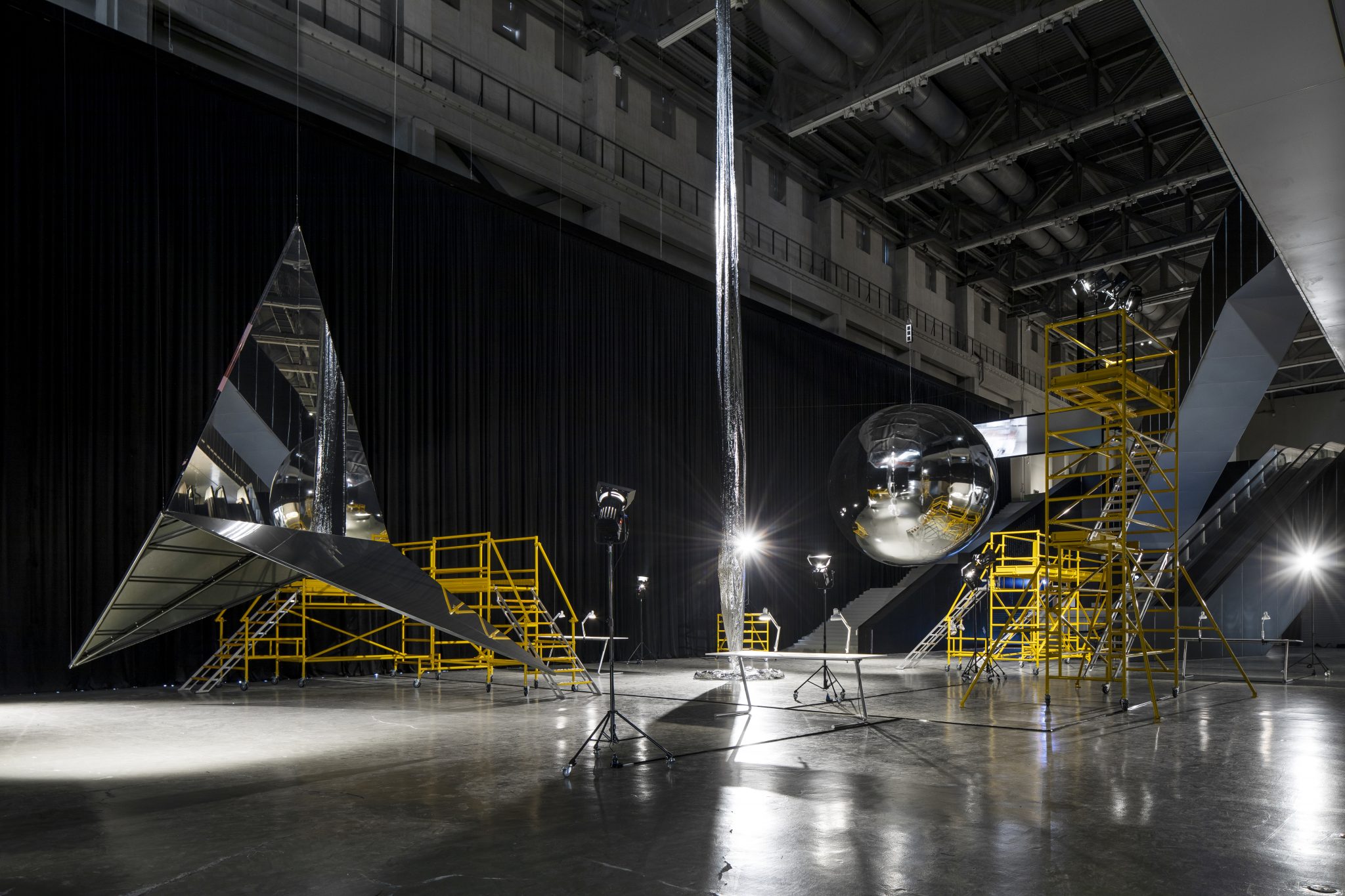Cosmos Cinema aims to deal with nearly all the pressing issues of our artistic moment – and some interstellar fancy to boot
Apparently – at least according to his catalogue text – back in what was then the Soviet Union and the 1970s, the 14th Shanghai Biennale’s chief curator, artist, e-flux founder and by now-US-based Anton Vidokle grew up in a world of space-themed merchandise and next to something called ‘the Cosmos Kino’ (that last bit means cinema in Russian). But while there’s a sprinkling of barefaced nostalgia throughout this show (among it a tribute to the Russian-American conceptualist Ilya Kabakov, who died last year), it is generally rooted in more lofty, less sentimental thinking: the cosmos (rather than humanity) as the origin of all things, both material and immaterial; taking a cue from German philosopher and biennale-catalogue-contributor Alexander Kluge, the cosmos as a form of ur-cinema, an index of all events, recorded by the glittering light traces they leave behind; and the early-twentieth-century Russian philosophical movement cosmism, a precursor of transhumanism, which according to one of its founding thinkers (Nikolai Fyodorovich Fyodorov) centred on a move ‘to regulate the forces of nature, to defeat death and bring ancestors back to life, so that they too would participate in the general resurrection’. This last is the subject of a number of Vidokle’s artworks.
As structuring concepts for an exhibition, there is of course a risk that all these flights of fancy will produce something akin to Jorge Luis Borges’s ‘Library of Babel’, which the celebrated Argentine author imagined would contain every possible book that could ever be written. Here we have works that deal with nearly all the pressing issues of our artistic moment: among them, Afrofuturism, indigenous traditions, gender and colonialism. Spiralling down the inside of the Power Station’s chimney (it used to be an actual power station) is a series of lightboxes by Jonas Staal (Exo-Ecologies, 2023, its title emblazoned on a giant red banner that fills up and lurks in the chimney shaft like a rocket in a silo) that index the nonhumans – among them guinea pigs, monkeys, mice, rats and fruit flies – that have been catapulted into outer space in the name of human expansionism. There is Nolan Oswald Dennis’s Black Liberation Zodiac: Khunuseti (2017–23), a roomsize installation featuring wallpapered astral-maps onto which Ancient Greek designations of the stars have been replaced with black liberation iconography. (The Pleiades, for example, become the Khunuseti, a designation given to the constellation by the Nama people of Southern Africa and referring to the daughters of the sky god Tsui // Goab.) That work, in turn, finds echoes (and this biennial is full of them) in Tavares Strachan’s series of ceramic sculptures and painted ‘self-portraits’ linking iconography from African culture to further astral charts and the iconography of space exploration.


Among the new works, there is He Zike’s video Random Access (2023), which centres, by way of a taxi journey in the aftermath of a data-cloud malfunction, on big data, our dependency on digital storage systems and the changing perception of time that results. There is Eastern philosophy influencing the West in the late Michel Seuphor’s interpretation of the 64 Hexagrammes du Yi-King (1986/2023), a series of black-and-white serigraphs depicting abstract geometric structures of the type that have long been a favourite of Western interior designers. There is Minjeong An’s Self-Portrait diagram (2007), a digital print that transposes personal details (moles, scars), general anatomy and auras onto what appears to be a blueprint for a robot; and Ivory Coast-born American Ouattara Watts’s more freestyle and expressionistic diagram-paintings from the Corruptions Impunity series (2011), which nod both to the artist’s African roots and his friendship with Jean-Michel Basquiat. Pretty soon you do get the impression that everything is cosmic. And, of course, it literally is. But it’s to the curators’ credit (Vidokle is joined by Xiang Zairong, Hallie Ayres, Ben Eastham and Lukas Brasiskis) that this well-structured (in nine chapters) and tightly wound (without ever totally becoming labyrinthine) show never collapses into a state of total Babel, despite its spiral galaxies of drawings and projections covering the walls, ceilings and corridors of this vast space.
It all begins however, with two gigantic lumps of interstellar fancy designed by American Trevor Paglen that dominate the cavernous main hall of the Power Station of Art: Prototype for a Nonfunctional Satellite (Design 4; Build 4), and Orbital Reflector (Triangle Variation #4) Scale Model (both works 2015–18). In 2019 an orbital deployment of a version of the latter failed as a result of a US government shutdown. Paglen’s idea was that if space is being exploited by commerce, science and the military, then why not add a purely aesthetic, or sweetly innocent, aspect to it also? A big artistic signature in the sky (‘they are shiny and look much bigger than they actually are’, Paglen said of the objects in an interview), designed to last a couple of months before burning up harmlessly in the Earth’s atmosphere. Here, the objects are full of fantastic promise but empty of function, which comes across like a lecture about purposelessness in Kantian aesthetics and the very definition of space junk. (In this respect the work has an intriguing relationship with Brazilian Clarissa Tossin’s Future Geography series (2021–), in which strips of amazon.com packaging are interlaced with NASA imagery of deep space using geographic Amazon-inspired weaving techniques). Despite the presence of two workbenches full of notes, drawings and mood boards, it’s the sculptures’ shiny seductive qualities that come to the fore. You’re transported, via shiny materiality and retro space-age form, from the space of a redundant power station into what might be the deck of the Death Star in Star Wars.

It would be easy to label the above superficial. But given that there’s a large room dedicated to film adaptations of Stanisław Lem’s sci-fi novel Solaris (1961) towards the end of the show, perhaps this is simply part of this exhibition-cum-movie’s script. (Musician Sun Ra is the subject of another ‘tribute’ room.) Alongside movie clips and various editions of Lem’s book, the former includes Deimantas Narkevičius’s video Revisiting Solaris (2007), in which he works with actor Donatas Banionis to reprise the lead role from Andrei Tarkovsky’s celebrated 1972 version but with an ending closer to Lem’s original story. All of which largely glosses over the fact that Lem, by his own admission, wasn’t writing science fiction because he wanted to, but because the restrictions and ideological pressure under which he wrote (in Communist Poland) meant that he had to locate his discourse in the relative safety of outer space. Given the current international popularity of Chinese science fiction and authors such as Cixin Liu, you leave the room wondering whether something similar is going on in China now. But you’re not encouraged to do that, and Liu and Chinese sci-fi are largely, and oddly, absent here. Nevertheless you can’t escape the fact that Asian countries (China prominent among them) are increasingly active in space exploration today, at the same time as various new kinds of Cold War (and actual war) dominate terrestrial space. What you’re left with by the end of this show is a sense that it’s the mess of conflicting and overlapping ideologies down here that really map its territory, more than any kind of cosmic wonder. And the rather forlorn hope that we don’t export all that junk with us to outer space.
14th Shanghai Biennale: Cosmos Cinema at Power Station of Art, Shanghai, through 31 March
